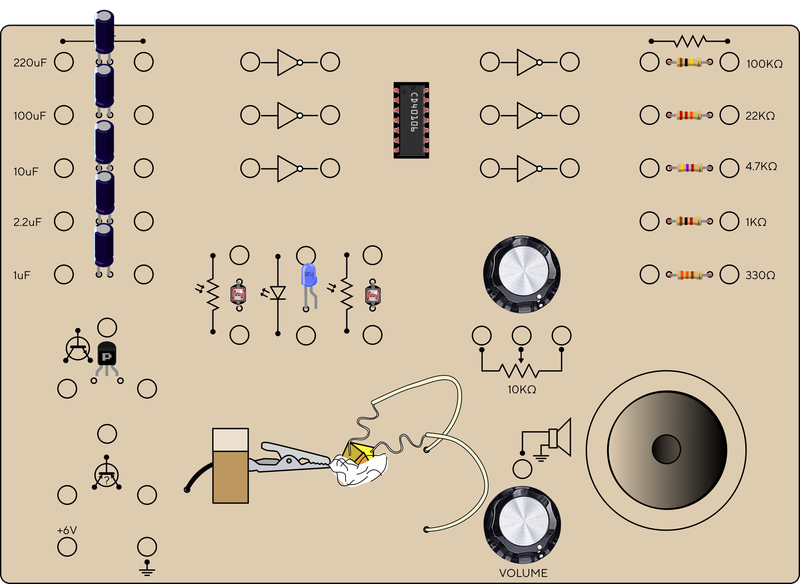This post is all about our Flamm project we ran with Cornwall Neighbourhoods for Change. The ultimate aim of the project was to try looking at technology by starting with the soil.
Part #1: The field trip
Our adventures began at Poldice mine where we congregated next to the arsenic labyrinth and tin stamps, and trekked across the site to Evan's shaft. This is one of many (open but protected) shafts on this site, the area surrounding it is full of rocks dumped by the miners as they were worthless to them, but they are still mineral rich - containing crystals brought up from hundreds of fathoms below.
We had a lot of rock hammers, goggles, face protection and gloves as well as a first aid kit. The kids didn't really need any explanation at all about what we were doing. Many of the families had grandparents who worked on the mines and for the kids it was finally a chance to "do minecraft for real".
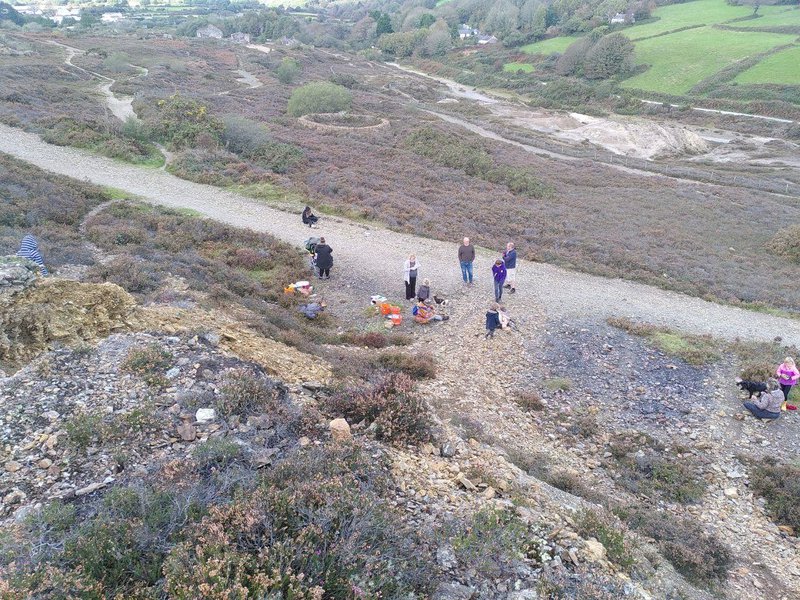
We tried to help identify many of the samples - a lot of pyrite, chalcopyrite and sphalerite. There are also quite a lot of nice visible green chlorite crystals in the rocks here, and many satisfyingly large quartz crystals. We had hand magnifiers to check on the tiniest specimens and lots of cardboard boxes to write your name on and store valuable collections.
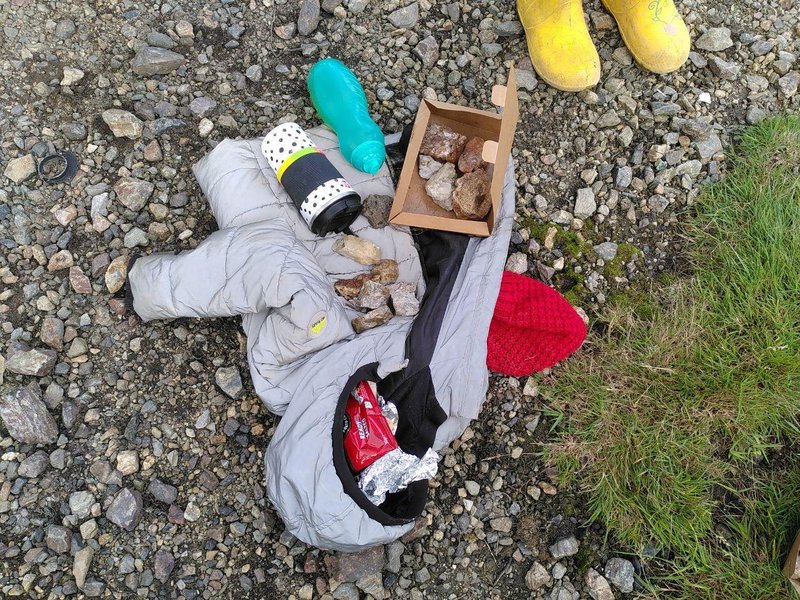
We also found a bit of more recent industrial waste. It turns out people use this site (which is already a kind of ancient environmental disaster) as a place to burn the insulation from cable to sell the extracted copper. Fittingly this was mostly a copper mine, so you wonder how much of the metal briefly returned home. Due to this there are large lumps of molten plastic here, one piece we found and took back with us contained a perfect imprint of a leaf, maybe it will last as long as natural fossils do.
Part #2: The workshop
The next week we set up in Redruth, in The Elms, where Cornwall Neighbourhoods for Change is based. We decorated the space with photographs of microscopic minerals, a small selection of books on mining, minerals and a crystal radio construction. We set up a collection of mineral samples which we've gradually built up, with little brown cards detailing what they were and which mine they came from. None of these are particularly rare, the idea was to make identification of the samples we'd collected at Poldice easier - as one of the things that can make this tricky is that you somehow need to meet a mineral face to face to identify it confidently. We also had information on the Bal Maidens (as we were doing very similar activities to them in terms of breaking up the ore and identifying it) as well as maps of mines near Gwennap, once known as the 'richest square mile in the Old World'.
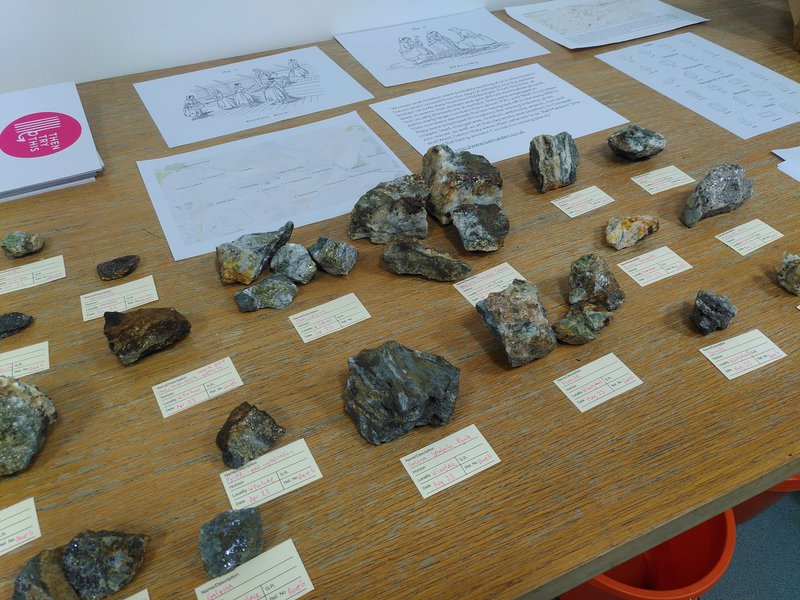
In the morning we we joined by the same families who had taken part in the field trip, and a few new faces. We jumped straight into building circuits on the Cardboard Crystal Synthesiser. Starting with lighting up a nice blue LED then making some simple buzzing sounds, each circuit is built by using springs to connect components together. This technique seemed to be easier for people to get on with than experience we've had trying similar things with electronics breadboards which are much more fiddly. Some of the participants preferred to continue with the hammering, in a safe space we had set up outside - this included looking for more minerals as well as destroying a donated iPhone so we could look at it under the microscope while others got stuck into the more advanced circuits. We also made little cards for the specimens people had collected which they could contribute to the collection for the public to see later on.
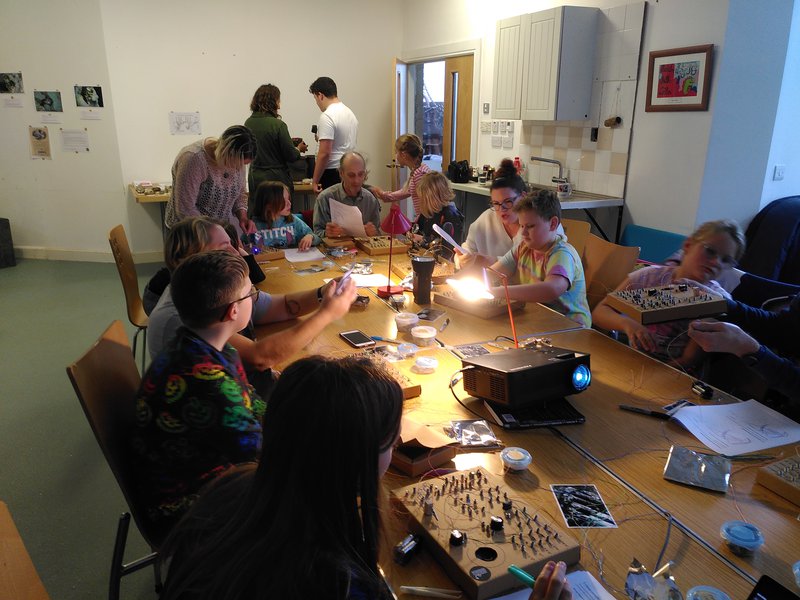
We started adding crystals to the circuit to make stranger, more varied sounds. We included quite a lot of raw material for people who didn't come to the field trip (or who didn't want to smash up their rocks further), a mix of chalcopyrite, pyrite, galena and marcasite from various locations.
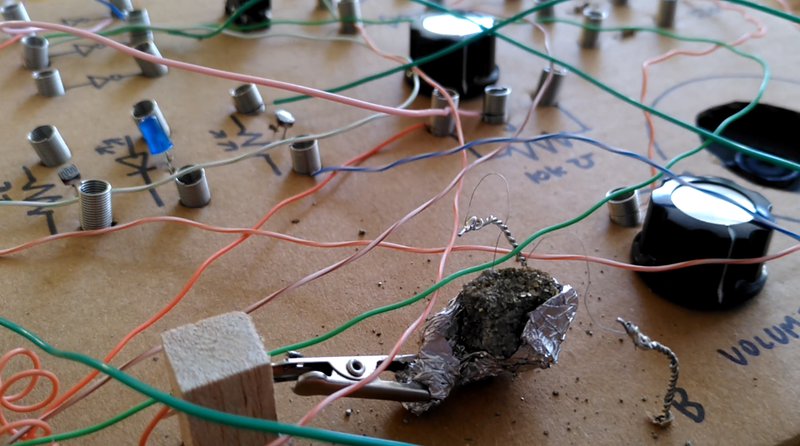
Lunch was made by &maggiemakes - a long term collaborator with us who provided geologically inspired folded nourishment including marbled bread and hummus, roast pumpkin pastitsio and milopita, a greek style apple cake.
Part #3: The Open Lab
A few changes to the setup and we were open to the public as part of the Flamm Festival. We reserved a few of the workshop participants' synthesisers so we could leave them running as examples, but didn't have a chance to get to some of them as we quickly filled up with people. Visitors felt comfortable to happily sit down, pull out all the wires and have a go without asking for permission - which is wonderful, but quite unusual, and while intentional (and part of the design choices of using obviously hand made materials) was a little too successful at times!
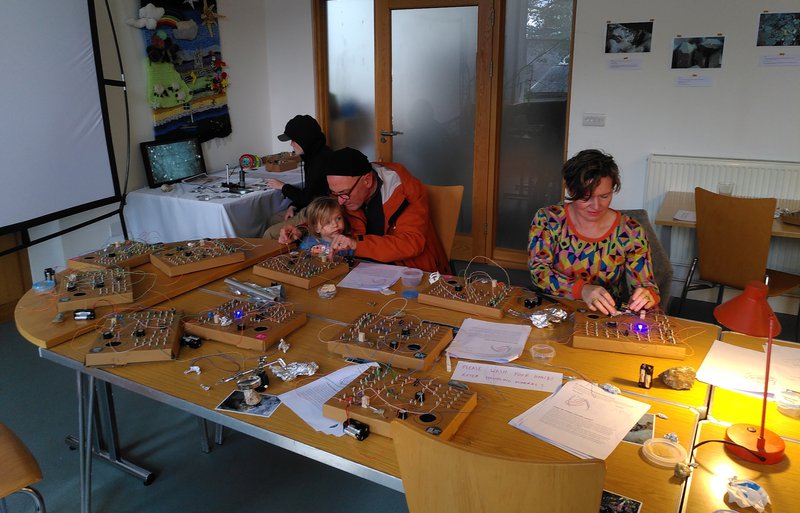
We had lots of young families and I think mostly local people, lots of discussions of technology and mining. One of the most interesting aspects of talking about crystals is the rather wide intersection between material science and the folk religion surrounding crystal properties. I think this is quite unique, and fascinating how both groups have to find ways to get on with each other (for example some of the best information sources on identification online come from the latter group).
We had two USB microscopes set up, these are much better than traditional ones as they can be connected to a screen and are therefore more accessible for people with eyesight problems. People used these to look at the mineral specimens, crystals people had brought with them, and in several cases, each others' body parts. The other microscope was set up in a kind of history of digital technology area, and could be used to examine bits of iPhones (one the aforementioned smashed up one and the other more carefully dismantled) as well as some silicon chips with clear windows so you can see the transistors.
A really important link here was a crystal radio we made (in a similarly constructed cardboard form) with a lump of pyrite as a diode for converting the radio waves into audio. This was key as it was the connecting point between the world of minerals and digital technology, as these lumps of crystal ultimately became the first transistors.
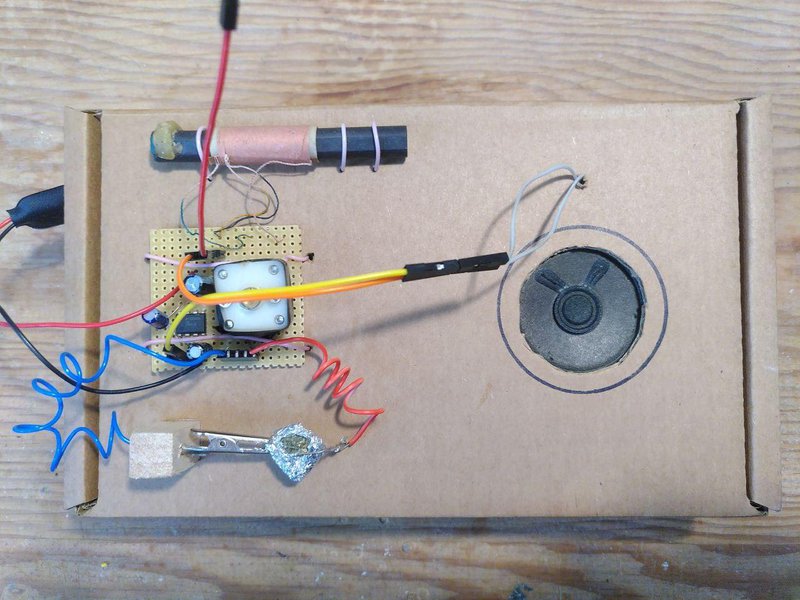
We had a small AM transmitter which could be used with the Cardboard Crystal Synthesiser to transmit it to the crystal radio - something we didn't have time to set up, but which would be good to include in future.
We also had a small PA playing a sound track consisting of recordings made while prototyping circuits and testing semiconductor material while researching the workshop, as well as field recordings taken while fossicking at Great Wheal Busy, which included sounds of rocks, a Geiger counter ticking away and occasional hammering.
All the information on the project, including how to build your own Cardboard Crystal Synthesiser are online here (all open source/open hardware). Let us know if you give it a go. Thank you to Flamm Cornwall for supporting this project and Cornwall Neighbourhoods for Change for allowing us to take over your space and providing an amazing group to try all this out on.
